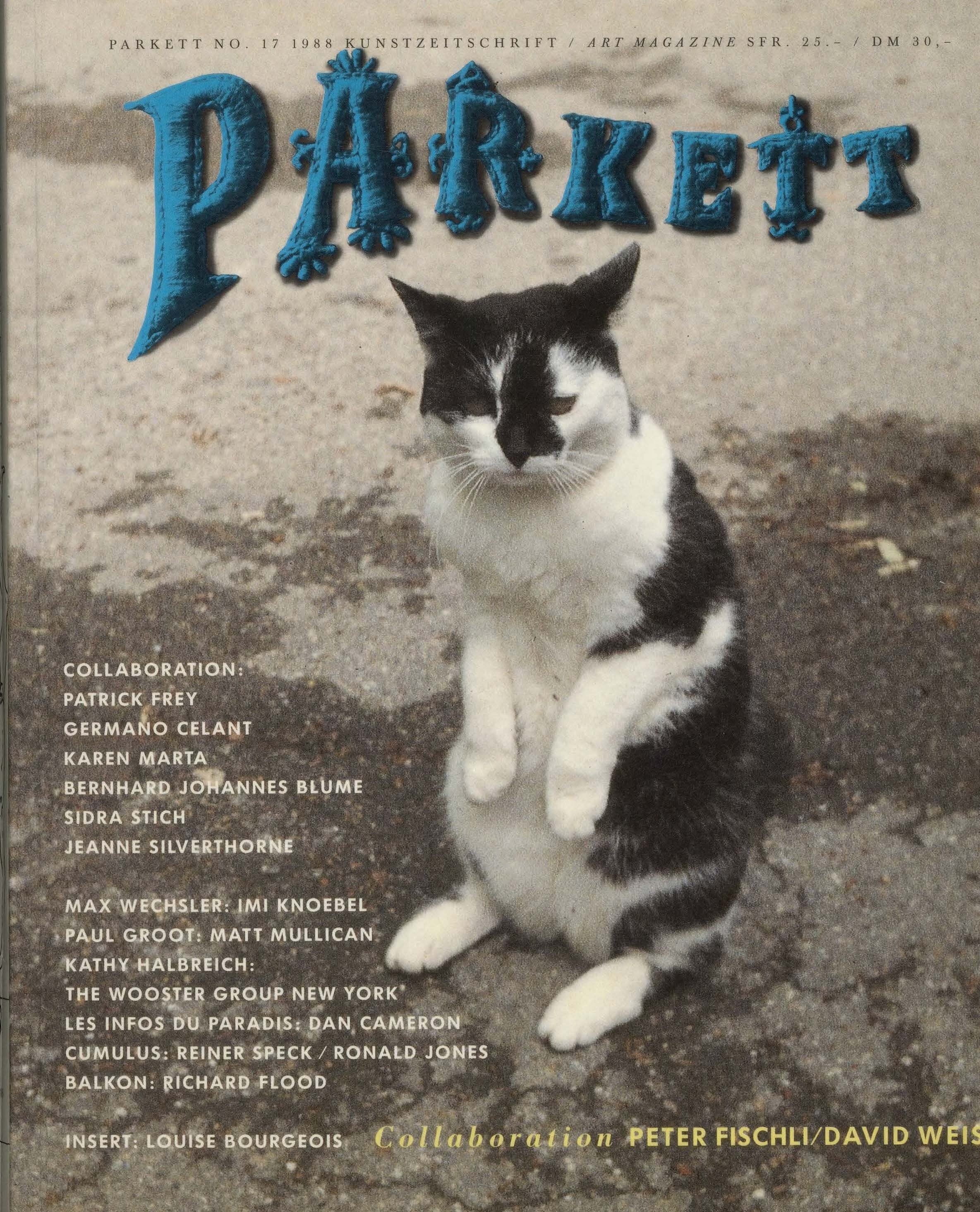A Text on the ‘Record’ by Fischli/Weiss’ by Bice Curiger (from Parkett 17)
The record made by Peter Fischli and David Weiss for the deluxe edition of Parkett no. 17 was not produced in a sound studio. Instead it is an object entitled Record but an object that can be played. Those who are not afraid of ruining their record player or rather the needle will hear something like a cross section of average disco music. Average in this case also means decreased quality of sound reproduction - the hi-fi fetish choking on itself.
Records rank among the most popular and common objects in ordinary use. They are stock items in every household along with potted plants, furniture, frying pans, cars, magazins and jam. Yet rarely have we ever come across a homemade, home- pressed species of record. Only Fischli/Weiss associate this likable mass-produced article with a homemade dress, a self-made bookcase, or a self-constructed house. They draw our attention to the state of suspension between the ridiculous and the sublime inherent in such objects. This record is an imitation.
One is reminded of the ancient legend in which a bird tries to eat a painted cherry because the imitation of nature in the picture is so flawless. Fischli/Weiss offer us an object in which the cherry has been turned into a record and the bird’s beak, into a needle. The same issue was involved in one of the small sculptures in the series “Suddenly This Overview” in which Fischli/Weiss molded the trademark of “His Master’s Voice.” Not only do we ask ourselves whether the dog is listening to his master’s real or fake, right or wrong voice but also whether the duplicated trademark can still claim to be a trademark. The Fischli/Weiss record is made of Beracryl (acrylic) and is similar to the material used by the artists for their socalled “rubber” sculptures. Thus “rubber” can sometimes imitate rubber but in the present case, acrylic is “imitating” vinyl.
Parkett Cover
Fischli/Weiss’ cover for Parkett no. 17
Artist Document
Rebecca Warren (Parkett 78) explains what it meant for her as an art student at the time to read the Fischi/Weiss Parkett issue 17 and particularly to see its cover image:
“The first Parkett I ever saw had this photograph on the cover, it was 1989 in the library at Goldsmiths’ College. Years later Peter Fischli told me that he and David Weiss had been walking around Zurich trying not to do very much, and had happened upon this strangely bored cat in some kind of zoo. Wanting their attention it performed this trick of sitting up. The first time I saw it struck me that something so seemingly banal could function as art. But it was obvious that it was more than just a photograph of a cat. It had a lightness to it. I don’t mean that it was weak, but rather that it had a sort of airiness; it was ambivalent, open-ended. For me seeing this gave me an understanding of what could be allowed; of having the freedom to explore a different territory, beyond the conceptual/minimal academy of the day.”




